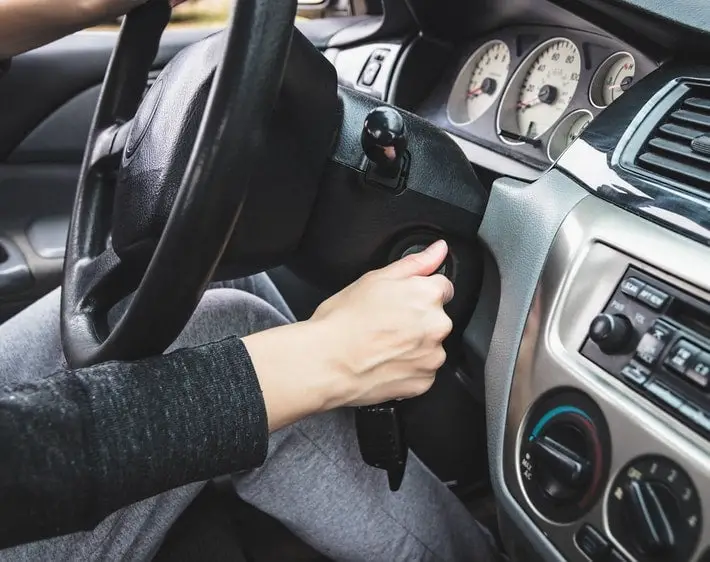A stuck starter is one of the most common causes behind a car that won’t start. It’s a small but crucial component responsible for getting your engine running, and when it’s jammed, your car can’t go anywhere. But how do you know for sure that the starter is stuck and not something else? In this guide, we’ll break it all down for you.
You’ll learn how to spot the common signs of a stuck starter, understand why it happens, and explore simple fixes and preventive measures. Whether you’re a seasoned driver or someone just starting to gain the knowledge of car maintenance, this article will equip you with the knowledge you need to tackle the issue with confidence.
What Is a Car Starter, and Why Is It Important?
Your car’s starter is a small but mighty component that plays a critical role in getting your engine running. It’s an electric motor that cranks the engine to begin combustion. Without it, your car won’t start. The starter is powered by your battery and is activated when you turn the ignition key or press the start button.
Common Signs that Your Starter Might Be Stuck
Spotting a stuck starter isn’t always straightforward, but there are some telltale signs to look out for.
- Clicking Sound When You Turn the Key
If you hear a rapid clicking noise when you try to start your car, it might mean the starter motor isn’t engaging properly. This is one of the classic signs of a stuck starter. - Grinding Noise
A grinding sound while starting your car indicates that the starter gear is not meshing correctly with the engine’s flywheel. This could happen if the starter is stuck or misaligned. - No Sound or Response
When you turn the ignition and nothing happens—no clicks, no lights—it’s possible the starter is frozen in place or has failed completely. - Smoke or Burning Smell
A stuck starter can overheat and produce smoke or a burning odor. This happens because the motor keeps running without disengaging, leading to overheating. - Engine Won’t Turn Over
If the engine fails to crank even though the battery is fully charged, a jammed starter could be the reason.
Causes of a Stuck Starter
To understand why your starter might be stuck, it helps to know what can go wrong.
- Dirt and Debris Build-Up
Over time, grime and debris can accumulate inside the starter motor, making it difficult for the gears to move freely. - Worn-Out Solenoid
The solenoid is a key part of the starter that pushes the gear into the flywheel. If it wears out, the starter might get stuck. - Low Battery Power
A weak battery can cause the starter to get stuck as it struggles to generate enough power to crank the engine. - Faulty Wiring
Damaged or corroded wiring can interrupt the flow of electricity to the starter, causing it to malfunction. - Mechanical Failure
Components within the starter, such as the pinion gear or motor brushes, may wear out or break, leading to a jammed starter.
Step-By-Step Guide to Diagnosing a Stuck Starter
Let’s break down how you can diagnose the issue like a pro.
- Check the Battery
Ensure your battery has enough power. A multimeter can help you measure the voltage; it should read around 12.6 volts when fully charged. - Inspect the Starter Connections
Examine the wiring connected to the starter motor for any signs of corrosion, looseness, or damage. - Tap the Starter Gently
Sometimes, a light tap on the starter housing can free up a stuck gear. Use a wrench or hammer, but avoid hitting too hard, as this might cause further damage. - Test the Solenoid
The solenoid is the bridge between your ignition switch and the starter. If it’s faulty, the starter won’t engage. Testing this component might require professional tools. - Listen for Unusual Noises
The sounds your car makes can tell you a lot. Clicking, grinding, or complete silence are all clues pointing to a starter issue.
Solutions for a Stuck Car Starter
If your starter is indeed stuck, there are several ways to address the problem.
- Clean the Starter
Dirt and debris inside the starter motor can be removed by disassembling and cleaning the unit. This should be done carefully to avoid damaging any internal parts. - Replace the Solenoid
If the solenoid is the culprit, replacing it can restore the starter’s functionality. - Fix the Wiring
Repair or replace any damaged wires to ensure a proper flow of electricity. - Recharge or Replace the Battery
If a weak battery caused the problem, charging or replacing it can solve the issue. - Replace the Starter
In some cases, the starter might be beyond repair. Installing a new starter motor can get your car back on the road.
Preventing Starter Problems
As the saying goes, prevention is better than cure. Here’s how you can keep your starter in good shape.
- Keep Your Battery Healthy
A strong battery reduces the strain on your starter. Check your battery regularly and replace it when it starts to show signs of weakness. - Inspect Wiring Periodically
Check the wiring for signs of wear and tear, and replace any damaged sections promptly. - Avoid Holding the Key Too Long
Turning the key for too long can overwork the starter motor and cause it to stick or overheat. - Regular Maintenance
Routine inspections by a mechanic can help identify starter issues before they escalate.
When to Seek Professional Help
While some starter issues can be resolved at home, others require expert intervention. If you’re unsure about diagnosing or fixing the problem, it’s best to consult a professional mechanic. Ignoring the issue could lead to more extensive damage and costly repairs.

